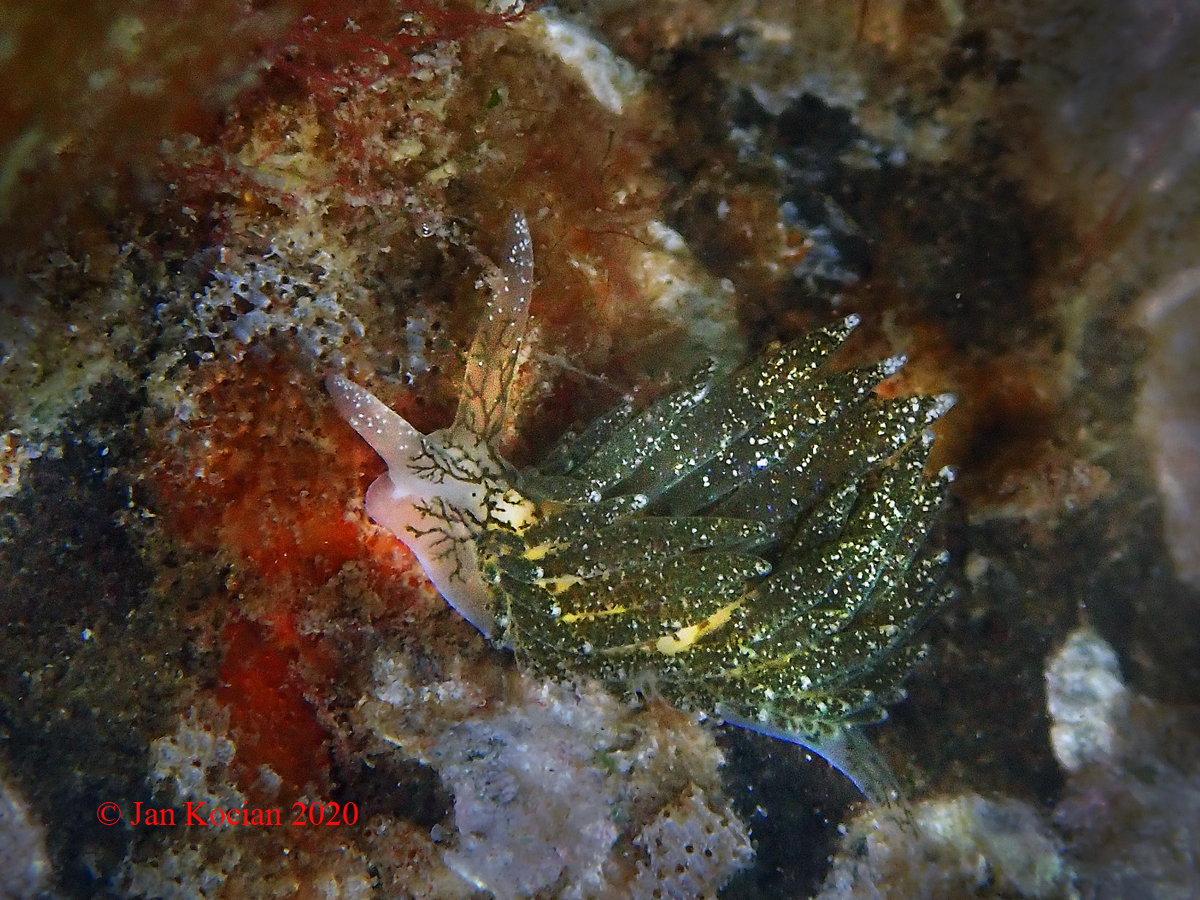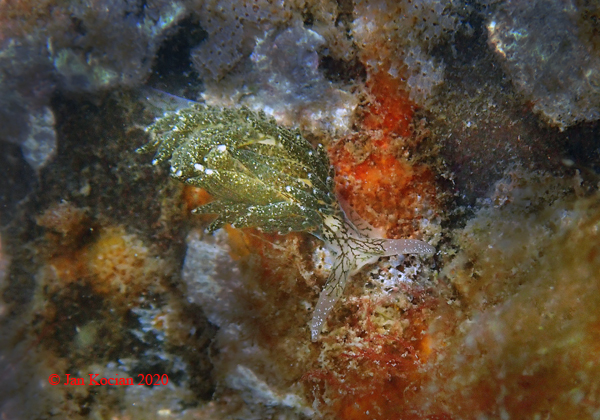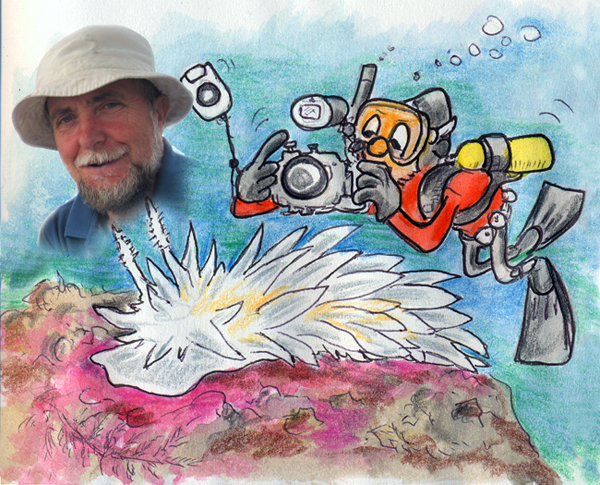 |
Placida dendritica
Image courtesy of Jan KocianLagoon Point, Whidbey Island, B.C., Canada
Image courtesy of Jan Kocian
Placida dendritica (Alder & Hancock, 1843)
Commonly called sapsucking sea slugs, because they suck the juices out of algae cells, the derivation of their main group name - Sacoglossa - translates to "Saco" - sack and "glossa" - in the mouth, drawing attention to a unique anatomical feature found only in this group - a sack in the critters throat that collects warn out rachidian teeth, as they are dropped off the radular ribbon. The radula of this group contains only a single row of sharp needle-like rachidian teeth - no lateral teeth or marginals.
Placida dendritica is a small and very cryptic species commonly overlooked by divers who rarely search through clump of filamentous green algae.
This is one of the solar sea slugs, sequestering chloroplasts from the algae it feeds on in its cerata. These chloroplasts continue to carry out photosynthesis, using energy from the sun to convert carbon dioxide and water into glucose and oxygen. The chemical reaction which only goes one direction is - 6CO2 + 6H2O producing 1 glucose and 6O2. We can clearly see the branching liver diverticulum (hence the name "dendritica") full of chloroplasts on the head in Jan's great photo. White specks a scattered over the chloroplast laden cerata.
This tiny herbivore feeds on algal species Codium fragile and Codium setchelli.
WEBMASTER'S NOTES : As most of you know, Jan has been a prolific contributor to the Slug Site! Jan combines his skills as an underwater photographer/naturalist with cartoon
artistry that is unmatched in my humble opinion. Jan is the prototype of the "citizen scientist", a moniker many of us aspire to but few have achieved! Jan is a very keen observer of life in the waters around Whidbey Island, Washington. Rainy weather and cold water are his constant companions in his quest to unravel the many mysteries of his ocean realm!
Our hats are truly off to you Jan in recognition of your many contributions to better understand nature as we know it in the many communities that abound in it's water world!
Send Jan email at honkoc@hotmail.com
Attention all you Sluggers, and you know who you are!
The NSSI 2nd edition is available in
ebook PDF and
book
form . The hard back version will become available Nov. 1st. Both will cost $65 (individually).
You will need to jump through a few hoops to get the electronic version as pdf distribution is protected by Adobe ID!! Please read the
following to enable reading your electronic purchase!
This new 2nd Edition is updated and reorganized, including 185 new species. Among other features, the new edition includes additional photographs of species, an
identification key, and an up-to-date classification reflecting the latest evolutionary relationships.
The Indo-Pacific represents the largest expanse of tropical ocean in the world, stretching from the Indian Ocean coast of southern Africa and the Red Sea to the central Pacific of the Hawaiian Islands, Easter Island and the Marquesas. This region supports the most diverse marine fauna of any place in the world for most groups of marine organisms. The nudibranchs and sea slugs are no exception to this rule; there are about 3,000 described species of these organisms in the world and at least 40% of these have been found exclusively in the Indo-Pacific tropics. This book illustrates 2,138 Indo-Pacific nudibranchs and sea slugs, including many undescribed species.

Sammamish, WA 98074
Mar. 2020
Send Dave email at davidwbehrens@gmail.com


